
Author Archives: admin


B-Side Michael Snow
B-Side Ellen Gallery is a series of photographs of the back sides of artworks drawn from the collection of the Leonard & Bina Ellen Gallery, Concordia University. The images are printed actual size, and are glued or stapled around commercial painting stretchers. This work is from the grouping “Works From Single Collection Rack”.
Force Majeure, video component

Force Majeure
Reclined in a chaise longue, the visitor looks upward and contemplates five large-screen LCD monitors. Several flying figures, women and men, flit across the screens against blue sky and clouds. Simultaneously suspended and buffeted about in a world of air, the fliers’ street clothes snap and ripple, testimony to the wind’s elemental power. That the fliers are truly flying, not falling, cannot be taken for granted; the memory of the World Trade Center “jumpers” remains close at hand.
A soundtrack of rock-and-roll drumbeats and synthesized noises parallels the fliers’ aimless trajectories; the drums launch forth on promising starts, but falter and peter out.
Vertigo and peril are never far off. Given the large monitors mounted on the ceiling above, the sense of restrained peril invades even the installation materials themselves. The wind tunnel propelling the fliers cannot be seen, but a temporary suspension from gravity is being tested, both by the flyers and the monitors themselves. The universal order represented in the Sistine Chapel is here inverted: no divine covenant, just a careen through the clouds—provisional, precarious, unmoored.
text: Edwin Janzen

Wood vs Wood (final sculpture)
Test
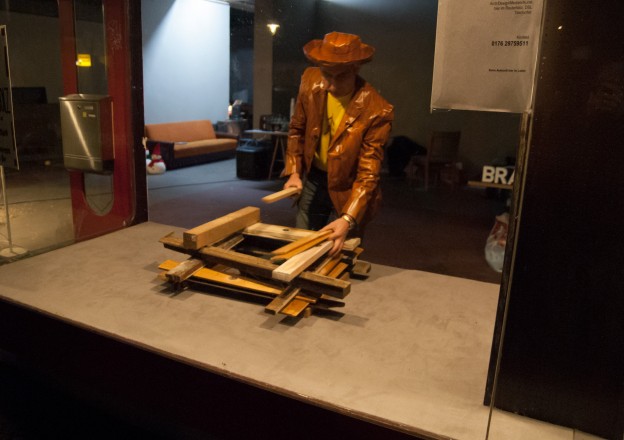
Wood vs Wood (part 2: stacking)
After all of the wood had had at least one hole drilled in it, it was stacked in a pile in the adjacent window.

Wood vs Wood (part 1: making)
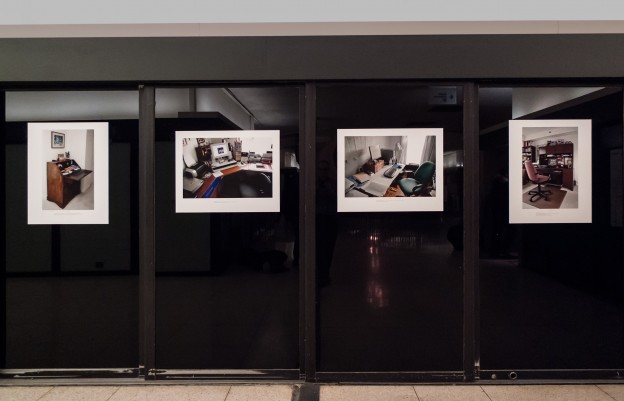
Family Workstations
Family workstations is a documentary photography series of the personal computers and home workspaces of the artist and his relatives in Canada and Northern Ireland. For the photos, family members were invited to arrange their personal spaces and put something significant on the screens–these included documents and applications the owners were creating (a memoir, a newspaper article, a web site, a photo collection a piece software), as well as a favourite computer game and image. At the bottom of each print is a text stating the relation of the person to the artist (mother, brother, uncle, etc.) and the technical specifications for the computer depicted. The people themselves were not included in the photo.
The series is a kind of family portrait, where the identity of each member becomes an extension of their choice of technology and how they arrange their physical space. It is intended as a snapshot of an era. Initially the artist assumed that the computer technology and the way people were using them would appear quickly obsolete, while the human relations would be more durable. But, while the relation of father, mother, brother, uncle, cousin, does not change, the people themselves did. They age, multiply and die.
In the artist’s family, his mother’s disdain for computers (her portrait shows her tech-free writing table) was always in conflict with his father’s early-adopter embracing of technology. The artist recalls the first time a computer came in the house was in 1975. His father set up a rudimentary computer terminal connected to the home dial-phone receiver on the mahogany dining-room table until his mom saw it and told him to take that ugly thing elsewhere.
Since then, the artist is both enthusiastic about new technology, and aware of how it changes things. As digital technologies continue to be more and more integrated into every aspect of our lives and even our bodies, Family Work Stations is a cautiously-nostalgic sign post made for future viewers looking back to see how things have changed and how that change might of happened.
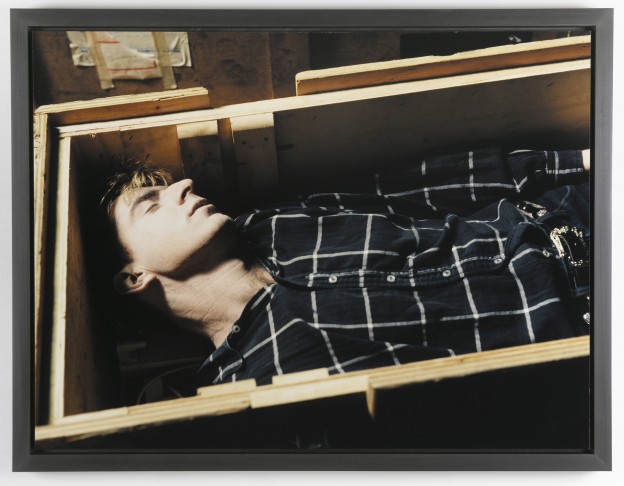
Dead (1)
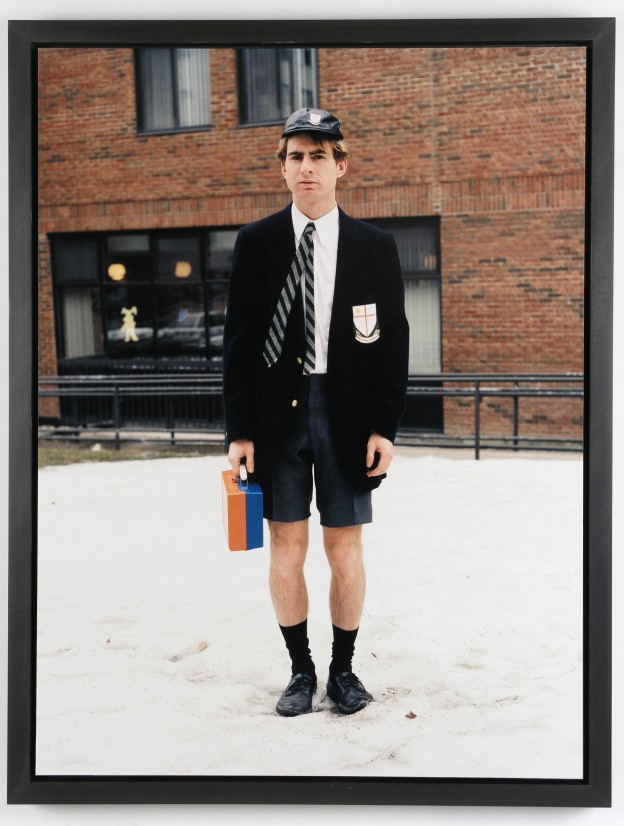
School Boy

Tied Up

Diesel Queen
This work was part of the Asserting Self grouping in the Tout ou rien exhibition along with works by Karen Trask.
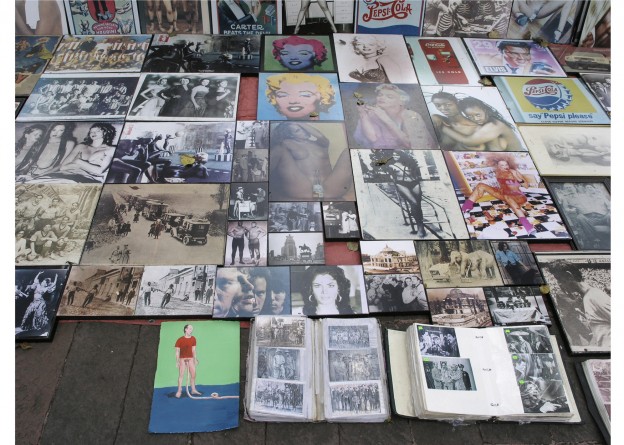
Extra Long Penis
This work was part of the Protected Sensations & Exposed Ideas/em> grouping in the Tout ou rien exhibition along with works by Karen Trask.
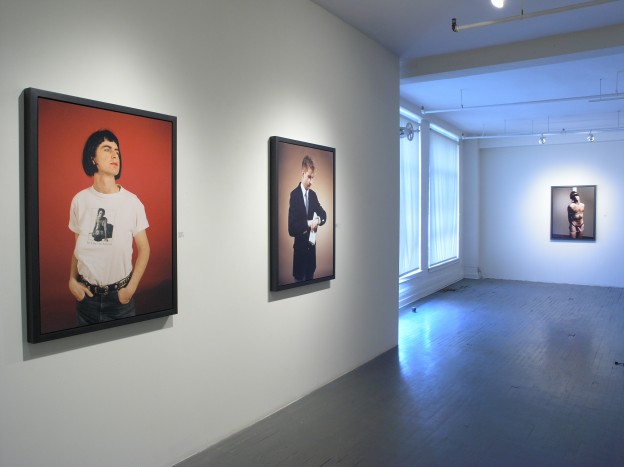
Absolutely Fabulous
Absolutely Fabulous is the title of the exhibition held at Galerie Thérèse Dion in 2006, and is a series of photographic self portraits of the artist. The work was initially presented in 1993 as a storytelling performance entitled “Souvenirs“. The artist sat accompanied with a number of small photos of himself in various guises. They are photos of him as he is, imagined being or had lived. Viewers were asked to choose an image and the artist responded with a short story that would create a poetic juxtaposition with the photograph.
The work “Dead (1)” was featured in Penny Cousineau-Levine’s book “Faking Death“. The publication of the book led to exhibition “Faking Death” at the Jack Shainman Gallery in New York in 2006, and several of the works from the “Souvenirs” series were presented at this important exhibition.
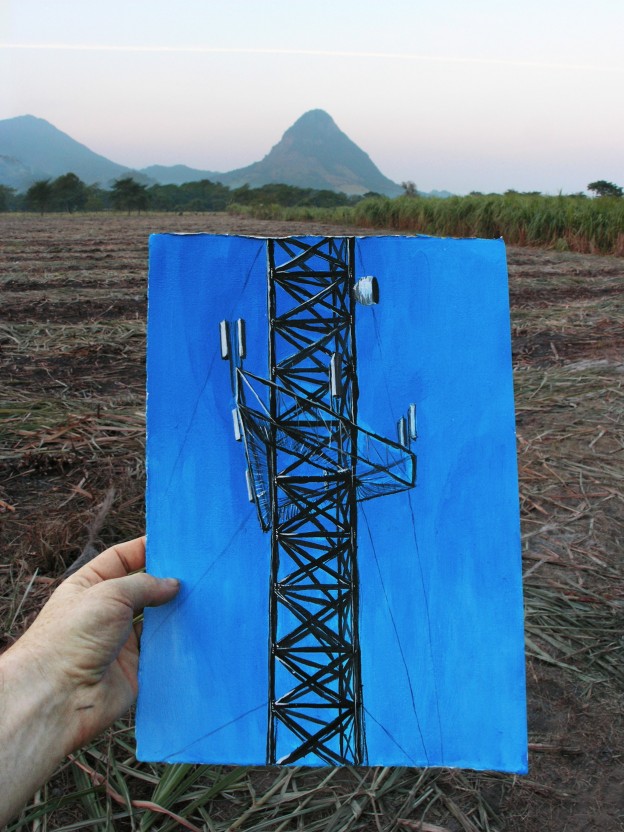
Cell Tower Mountain

Cell Tower Beach

Bubbles Ashtray

Teotihuacan Hay Bale

Designer Coffee II

Blue Painting
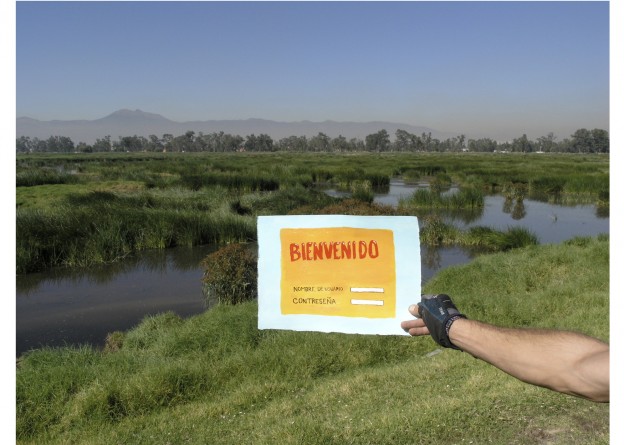
Xochimilco Password

Designer Coffee I

Perote Water Tank

Al Pastor

Asphalt bottle
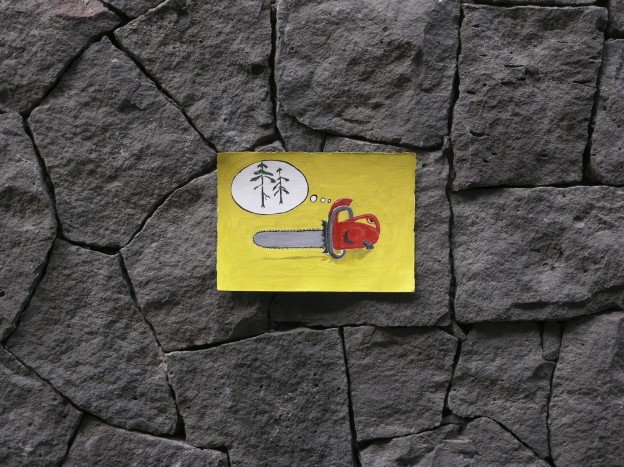
Chain Saw Dream
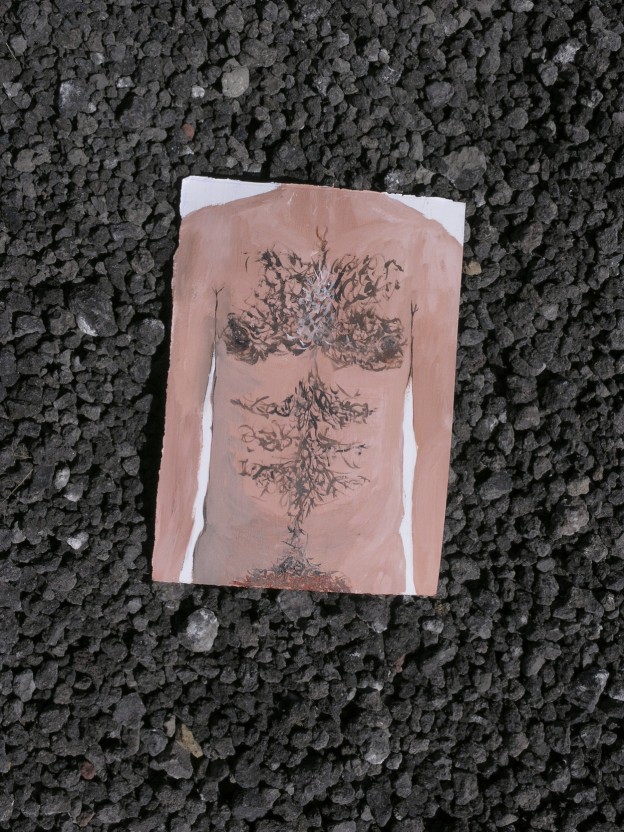
Hairy Chest
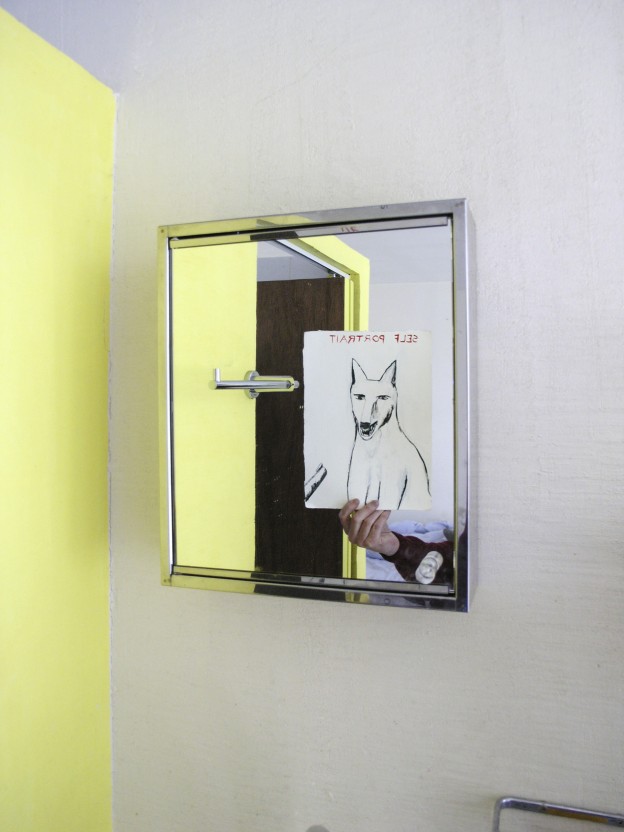
Self Portrait as Wolf

Talking Clouds

Woman Rock Dog
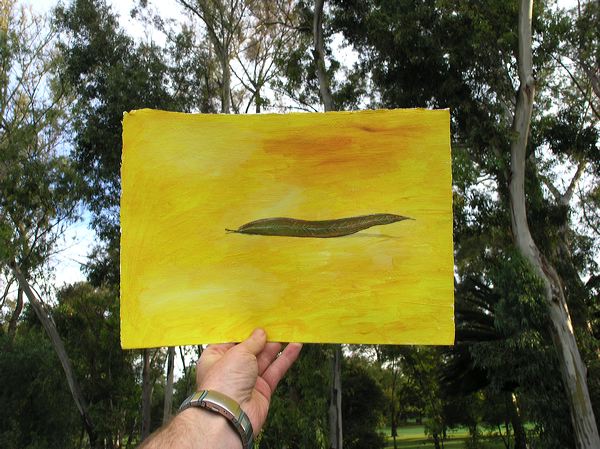
Leaf Tree

Chapultepec Bird

Arbol del Fuego

Art Photography
Art photography is a series of photographs in which a painting by the artist is photographed in relationship to a background. The initial inspiration for this series came from looking at photos of artworks that showed more than they intended to show (i.e. ‘bad’ photos of art). I’m interested in developing a visual metaphor, I guess my visual metaphor, for how the conscious surfaces from the unconscious. The paintings and their backgrounds can symbolize either place, and I am trying to create interesting or poetic tensions between references to imaginary and real space. ‘Real’ insofar as photographic space is real… I photograph artworks professionally for a living. Francis Alys, Sign Painting Project 1993-1997, is a reference for this work.

Éole
Éole is a 4 minute video of a BASE jump I made in September, 2002. It consists of a curtained off enclosure, with a small TV and headphones. A booth accommodating a single viewer with headphones to listen to the soundtrack. With this installation, I am creating a space that allows the viewer to cross the boundary of fear that goes with finding or exploring new territory. I made the jump wearing a modified stethoscope and a microphone to collect both internal body and external ambient sounds.

Turning Point
Death is ten seconds away. Just enough time to do something simple and unimportant. In the context of extreme sports, the artist and his skydiving mentor invite spectators to consider the meaning of keeping control in dangerous situations.
Falling through the sky is a difficult place to do something ordinary. The fear of dying, of making mistakes, of not getting it right, or of simply looking stupid all come into play and have to be overcome in order to continue, to survive.
This exhibition, Turning Point, is a collaborative project between artist Paul Litherland and aerial performer Bertrand Cloutier. It is a video installation consisting of two synchronized video projections with quadraphonic sound. Viewers are mesmerized and destabilized by two skydivers in freefall (Litherland and Cloutier), signalling to each other and the viewer. Together they turn circles in perpetuity.
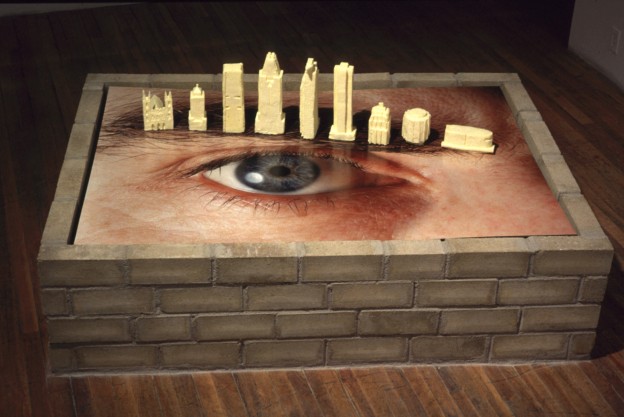
Body Building
Body Building is a sculpture with a brick base holding up a large colour photograph of the artist’s eye. Along the eyebrow are placed eight Montreal buildings modeled in butter, a perishable material sensitive to touch and temperature. As the exhibition progressed, the buildings sagged and collapsed under the heat of the gallery lights.
This work was produced following a risky BASE jump the artist made off a downtown office building around the time of the exhibition. The jump was a personal challenge, a “bucket list” act: walking to the edge and finding the courage to jump. It was done in secret, in the night, alone, without a camera or audience to record the event. So, when the artist was offered a show two weeks before the opening, the solitary but highly significant event became a natural focus as he quickly put together a work to exhibit.
Bodybuilding proposes a mix of symbolic references related to the subversive transformation of the corporate icon of an office building into a personal diving: the brick base evokes the solidity and power of architecture but is contradicted by the soft and unviable butter buildings; the eye of the artist, bigger than life, is the base for the buildings that are radically reduced in scale, the eye is not all-seeing but rather just a flat landscape for the unlikely structures that end up impeding its vision.
Body Building reflects the artist’s conflict filled relationship to both the material art object and the documentary nature of photography. In the end, it was a strange monument, commemorating an experience the artist could only allude to at the time in a cryptic statement written for the show. It was a monument to a remarkable act that went on to become central to the artist’s own oral history.

Hésitation
Hesitation is an outdoor installation of photographs along boulevard St- Laurent (“The Main”) in Montreal. They are photographs of the artist and other actors printed and mounted to metal supports identical in size and shape to parking signs and are attached to light posts on each side of the street between Sherbrooke and St. Viateur streets. The exhibition was coordinated by Galerie B-312.
The images are studio lit portraits of actors, with a simple coloured backgrounds. In this series the artist plays out examples of awkward relationships that encompass racial, class, gender and institutional realms. For example, one of the pairs of signs depicts the artist as undergoing some kind of medical intervention, where a masked surgeon is about to perform some act on a waiting patient (the artist). The institution meets the individual.
From Kevin deForest’s text for the exhibition:
Paul Litherland’s “Hesitation” activates the urban visual fabric of identity by the installation of photographs on light posts through the Main. Mounted to metal backings, they resemble traffic signs in their scale and the shape of their rounded off edges. A graphic clarity is maintained by the simple format of the imagery – figures from the ankles up posed in front of monochrome backdrops. But unlike the crosswalk ‘marching man’ found at pedestrian crossings, the subjective, funky presence of identities and social situations counter the state provided sign system, and their design of transparent order and protection…. Read the complete text here:

Clear Cut

All Natural series
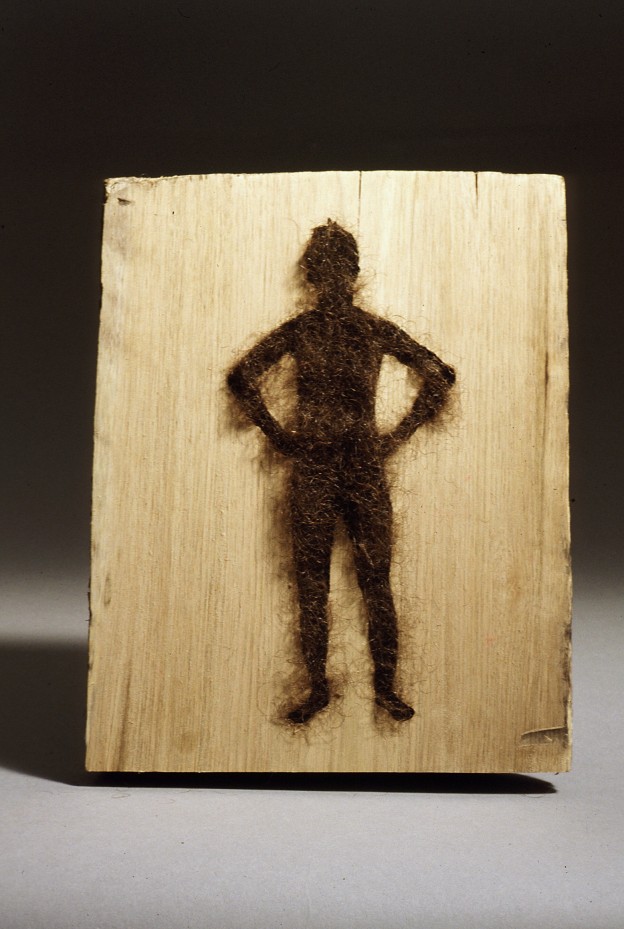
Hairy Man

Pineapple Pillow
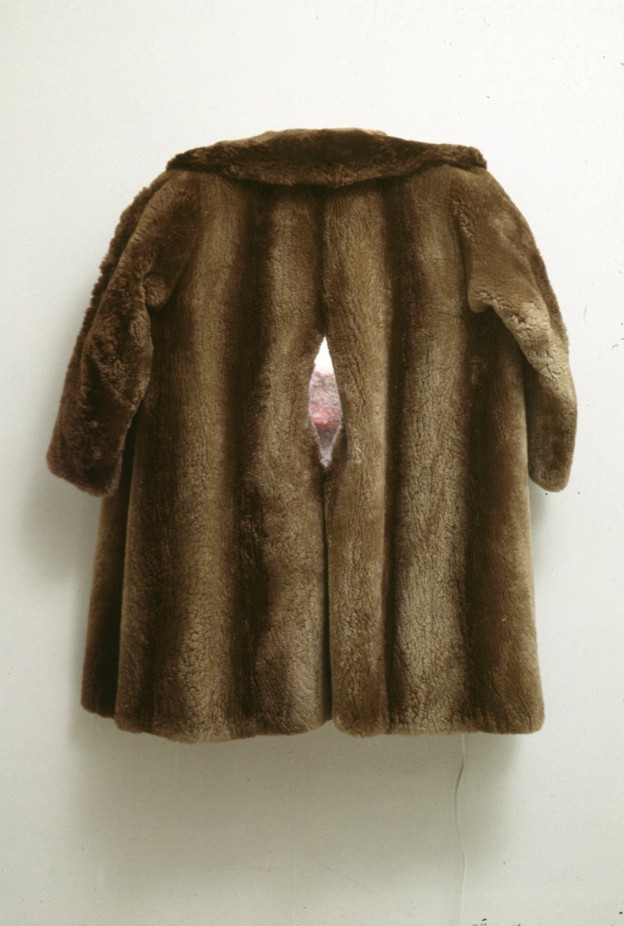
Beaver Nipple

Saint Jean Port Joli Sculptures
Photographs, wood, fur, hair and velvet make up the materials used in this series of works that explore ideas of the body in landscape.
The works were produced at the the artists centre est-nord-est in St-Jean-Port-Joli, Québec, home to a large community of wood sculptors, who produce works in wood from kitsch to critical.